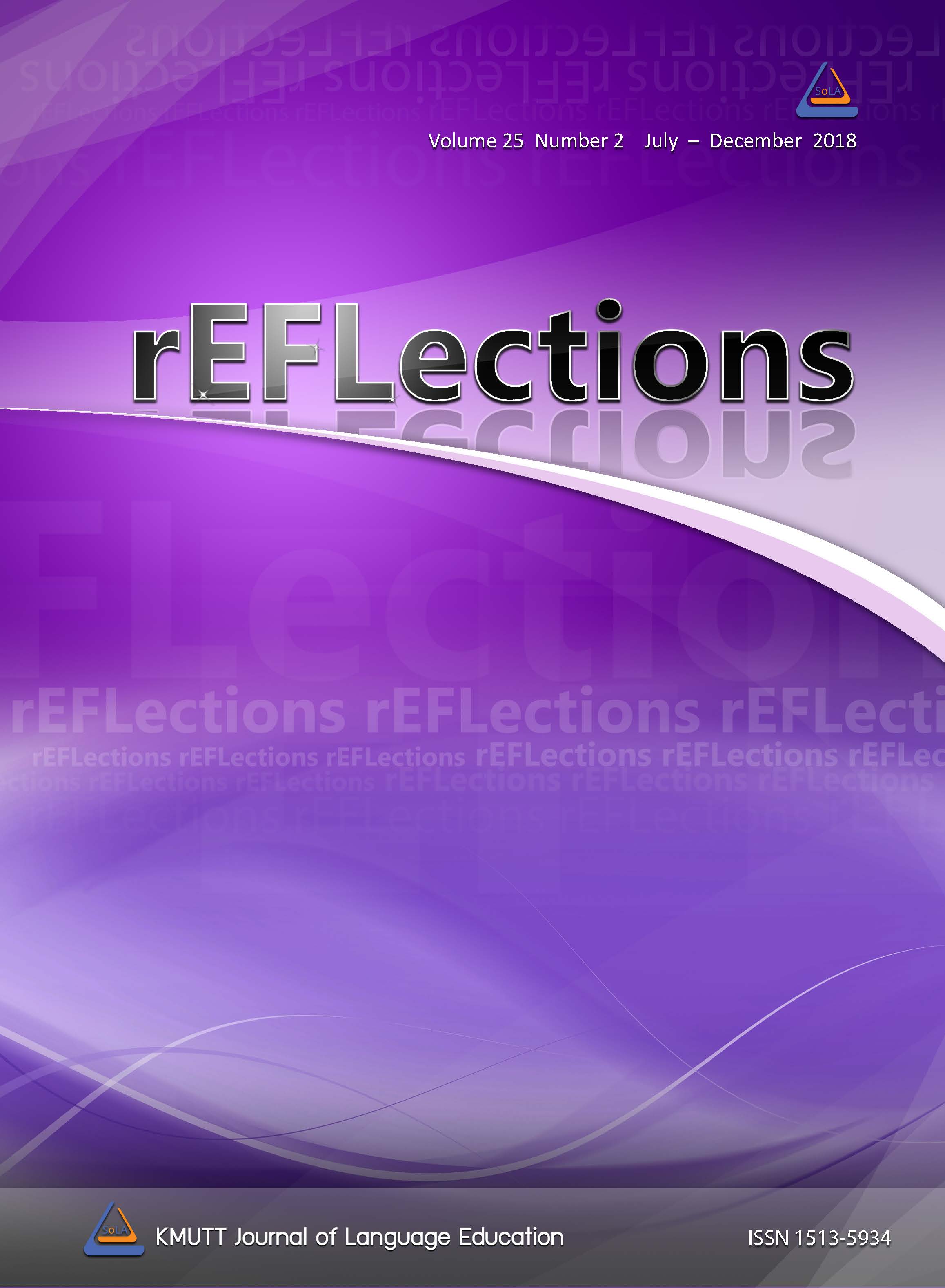Students’ Attitudes towards the Use of Digital Storytelling in Foreign Language Classroom: The Zimmer Twins Project
Main Article Content
Abstract
The study investigates students’ attitudes toward the integration of a Digital Storytelling (DST) project into a foreign language classroom, with particular interest in language improvement and motivation. The study incorporates both quantitative and qualitative research methods. The data were gathered from a class of university students learning English as a foreign language in Thailand (17 participants) via two instruments: questionnaires, and semi-structured interviews.
The findings reveal that students have positive attitudes towards the integration of DST into the language classroom and think that participation in such a project is beneficial to their language improvement and motivation. Suggestions are made for further research, especially on the real contributions of DST to students’ language improvement and motivation.
Article Details
References
Al-Shammary, M. (2007). Saudi English as a foreign language learners' attitudes toward computerassisted language learning. (Unpublished Doctoral Dissertation). West Virginia University, USA.
Barrett, H. (2006). Researching and evaluating digital storytelling as a deep learning tool. Technology and Teacher Education Annual, 1, 647.
Castaneda, M. (2013). “I am proud that I did it and it’s a piece of me”: Digital Storytelling in the Foreign Language Classroom. CALICO Journal, 30(1), 44-62.
Cloud, N., Lakin, J., & Leininger, E. (2011). Learner-centered teaching: The core of effective practices for adolescent English language learners. TESOL Journal, 2(2), 132–155.
Deci, L. & Ryan, R. (1985). Intrinsic motivation and self-determination in human behavior. New York, NY: Plenum.
Eccles, J. S., & Wigfield, A. (1995). In the mind of the achiever: The structure of adolescents’ academic achievement related-beliefs and self-perceptions. Personality and Social Psychology Bulletin, 21, 215–225.
Ellis, R. (1985). Understanding Second Language Acquisition. Oxford, England: Oxford University Press.
Gardner, R. C. (1985). Social psychology and second language learning: The role of attitudes and motivation. London, England: Edward Arnold.
Gardner, R. C., & Lambert, W. E. (1972). Attitudes and motivation in second language learning. Rowley, MA: Newbury House.
Hafner, C.A. & Miller, L. (2011). Fostering learner autonomy in English for Science: A collaborative digital video project in a technological learning environment. Language Learning & Technology, 15(3), 68-86.
Pintrich P. R., & Schunk, D. H. (1996). Motivation in education: Theory, research, and applications. Englewood Cliffs, NJ: Prentice Hall.
Ramirez-Verdugo, D., & Belmonte, I.A. (2007). Using digital stories to improve listening comprehension with Spanish young learners of English. Language Learning and Technology, 11(1), 87-101.
Reinders, H. (2011). Digital Storytelling in the Language Classroom. ELTWO Journal, 3, 1-9.
Reinders, H. & White, C. (2011). Learner autonomy and new learning environments. Language Learning and Technology, 15(3), 1-3.
Robin, B. (2006). The educational uses of digital storytelling. Technology and Teacher Education Annual, 1, 709.
Robin, B. R. (2008). Digital storytelling: A powerful technology tool for the 21st century classroom. Theory into Practice, 47(3), 220.
Sadik, A. (2008). Digital storytelling: A meaningful technology-integrated approach for engaged student learning. Educational Technology Research and Development, 56(4), 487–506.
Sauvignon, S.J. (1976). On the other side of the desk: a look at teacher attitude and motivation in second-language learning. The Canadian Modern Language Review, 32, 295-304.
Schunk, D. H. (1991). Self-efficacy and academic motivation. Educational Psychologist, 26(3&4), 207-231.
Tsou, W., Wang, W., & Tzeng, Y. (2004). Applying a multimedia storytelling website in foreign language learning. Computers and Education, 47, 17-28.
Vinogradova, P., Linville, H. A., & Bickel, B. (2011). “Listen to my story and you will know me”: Digital stories as student-centered collaborative projects. TESOL Journal, 2(2), 173–202.
Wigfield, A. (1994). Expectancy-value theory of achievement motivation: A developmental perspective. Educational Psychology Review, 6, 49-78.
Wigfield, A., & Eccles, J. (2000). Expectancy-value theory of achievement motivation. Contemporary Educational Psychology, 25, 68-81.
Yang, T. C., & Wu, W. C. (2012) Digital storytelling for enhancing student academic achievement, critical thinking, and learning motivation: A year-long study. Computers & Education, 59, 339-352.
Yoon, T. (2013). Are you digitized? Ways to provide motivation for ELLs using digital storytelling. International Journal of Research Studies in Educational Technology, 2(1), 25-34.


